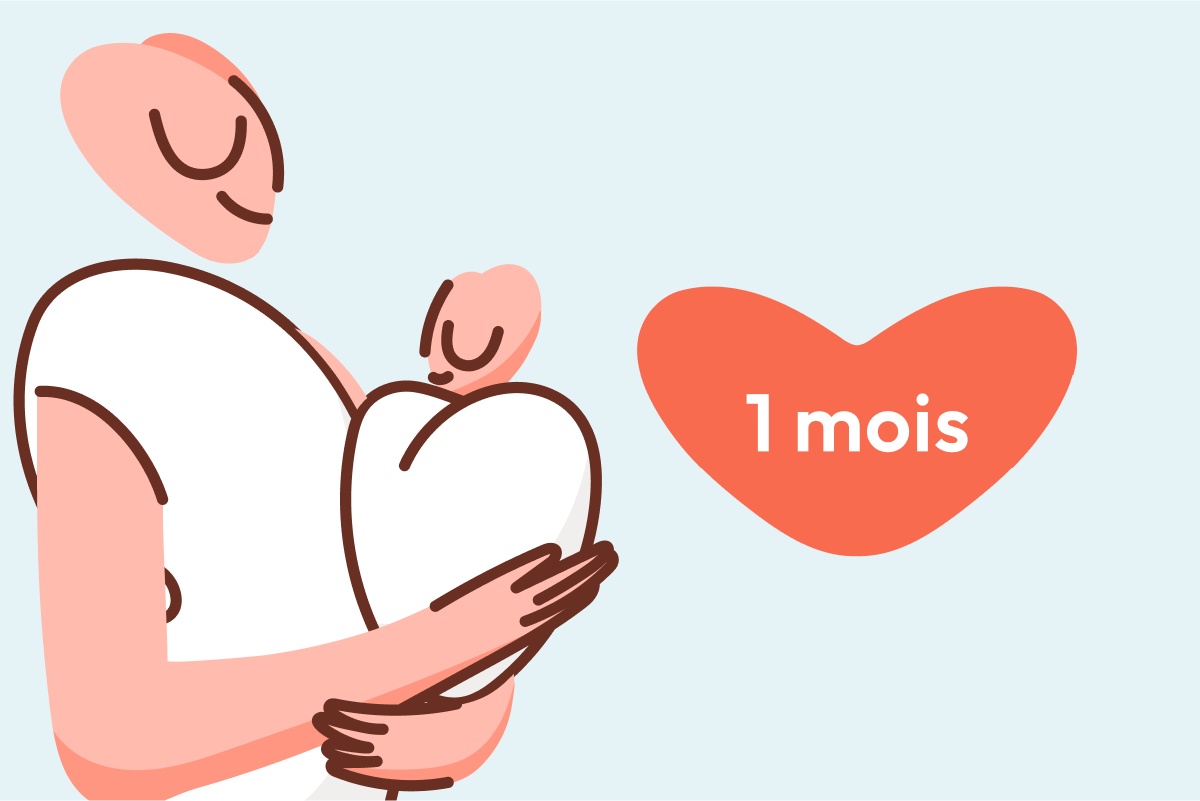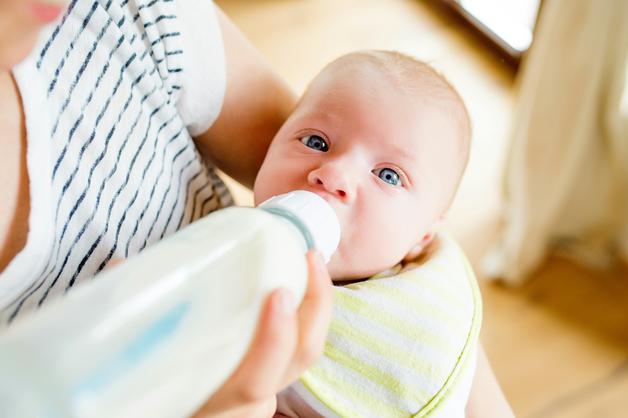Adjusting to life with a 1 month old baby can feel like entering an entirely new universe, where time moves in short sleep cycles and each day brings a fresh wave of questions. Is my baby eating enough? Are those jerky movements normal? Why do they cry so much? These are just some of the daily concerns that swirl in the mind of nearly every new parent. A 1 month old baby amazes with subtle changes—tiny fingers beginning to unfurl, tentative first sounds, and fleeting half-smiles that can melt away exhaustion, if only for a moment. Your baby’s growth isn’t just physical; their emerging senses, communication, and emotional needs are evolving with remarkable speed. This phase is a patchwork of magical moments and tough challenges, shaped by feeding demands, unpredictable sleep rhythms, and that ongoing quest for reassuring signs of healthy development. Here is how to decode the essentials—feeding cues, safe sleep, first reflexes, hygiene, emotional support, and everything in between—while recognizing the emotional whirlwind that comes with nurturing a 1 month old baby.
Physical Growth and First Milestones
Month one is a whirlwind of physiological transformation. Picture this: a 1 month old baby typically gains about 1 to 1.5 inches in length and puts on approximately 2 pounds—yet no two babies follow a script. Growth charts are helpful guides, but the real benchmarks are steady weight gain, regular wet diapers, and incremental changes in head circumference, which signal healthy brain development. Motor skills at this stage are governed by instinct—primitive reflexes such as rooting (turning the head in search of the breast or bottle), sucking, and gripping whatever lands in a tiny palm.
Tummy time suddenly becomes an unexpected highlight, where your baby might momentarily lift their head—a foundational move for developing neck and shoulder muscles. Have you noticed those spontaneous arm flails? That’s the classic Moro reflex at work, an automatic response to sudden stimulation. Over time, these jerky gestures give way to fluid motions, but for now, sudden movements and clenched fists are part of the landscape. Offer gentle encouragement: daily, supervised tummy time of one to five minutes can create the building blocks for future milestones.
Sensory Development: Seeing, Hearing, and Sensing the World
With a 1 month old baby, vision remains a work in progress. The world appears blurry, but faces and bold, high-contrast patterns at a distance of 8–12 inches catch attention. A black-and-white mobile or the simple joy of gazing into your eyes can all fire up visual connections in the brain. The sense of hearing is particularly well-developed—babies startle at loud noises and quickly become soothed by familiar voices. Scientific research shows they’re able to recognize their mother’s voice from birth, highlighting just how attuned their hearing already is.
The sense of smell and taste are equally remarkable. Did you know that a newborn can distinguish the scent of their mother within days? It’s more than endearing—it builds emotional security and early attachment. Gentle touches, skin-to-skin contact, and soft massages all feed into the bonding process, releasing oxytocin (the “love hormone”) for both baby and parent.
Early Communication and Emotional Connection
Crying is your 1 month old baby’s megaphone. Every tear, every wail, signals something: hunger, discomfort, tiredness, or simply the need for reassurance. Decoding the difference between a hunger cry and a tired cry can be perplexing, but over time, you’ll notice patterns. Babies begin to express themselves with a variety of soft coos, gurgles, and yes, the occasional reflexive smile that may just coincide with a fleeting sense of contentment.
Responding promptly to your baby’s cries isn’t just about comfort. Immediate reactions build trust and security, laying the neural groundwork for healthy attachment and early social-emotional development. Frequent eye contact, warm vocal tones, and gentle smiles nurture these crucial connections. By the end of the first month, you may even glimpse the first unprompted smile—a truly celebrated moment for new parents.
Feeding: Breastfeeding, Formula, and Nutritional Needs
A hungry 1 month old baby is relentless in expressing their need. Whether breastfeeding or formula feeding, attentive, responsive feeding is at the heart of healthy growth.
Breastfeeding
Breastfed babies usually demand 8–12 feedings per 24 hours. The dance of latch, suck, swallow, and pause becomes second nature, even if at first, it feels more like a wrestling match. Key indicators of a good latch include deep, rhythmic sucking, audible swallows, and a pain-free experience for the mother. If soreness or latching issues persist, lactation consultants offer critical guidance, helping to troubleshoot and protect breastfeeding success. Do you ever wonder how to spot satiety? Watch for relaxed hands, slowing down, and turning away from the nipple.
Some experts recommend vitamin K and D supplementation to support blood clotting and bone growth, especially for exclusively breastfed infants. This isn’t an indictment of breast milk—rather, it underscores unique neonatal physiological needs.
Formula Feeding
Formula offers structure: 3–4 hour intervals, close attention to hygiene, and careful preparation. Always use a bottle brush and thoroughly clean each component, ideally with a hot dishwasher cycle if possible. Never microwave bottles—uneven heating isn’t just a nuisance; it can cause dangerous hot spots and denature nutrients. Feed your 1 month old baby in a semi-upright position, avoiding bottle propping, which increases the risk of aspiration. Afterward, burping is more than a post-meal ritual—it’s a strategy to minimize spitting up and help small, gassy stomachs stay comfortable.
Hunger cues—rooting, restlessness, hand-to-mouth movements—precede feeding. Satiety shows itself in drowsy eyelids, a slack jaw, and lost interest in continuing. Count wet diapers: 4–6 daily for breastfed babies, 5–6 for those on formula, as a tangible sign of adequate intake.
Sleep: Patterns, Safety, and Establishing a Rhythm
A 1 month old baby typically sleeps 16–18 hours each day. The pattern feels anything but predictable, swinging between 30 minutes and a couple of hours, day or night. Sleep is polyphasic—scattered in short episodes. What governs these rhythms? Immature circadian systems, tiny tummies, and the ever-present need for frequent feeds.
Safety is the central theme of infant sleep science. Place your baby on their back, on a firm, flat crib or bassinet surface, with no soft objects, loose bedding, or pillows. These recommendations—summarized by the American Academy of Pediatrics—significantly reduce the risk of Sudden Infant Death Syndrome (SIDS). Room-sharing is encouraged, but bed-sharing introduces risks and is not supported by most pediatric guidelines.
Establishing sleep cues is equally valuable. Spotting signs like yawning or eye rubbing helps transition your baby before overtiredness takes hold, making sleep initiation smoother. Gentle winding-down rituals such as dim lighting, a warm bath, or soft humming help create positive sleep associations, even if uninterrupted sleep remains elusive right now.
Hygiene, Skin Care, and Safety Essentials
Bathing a 1 month old baby two to three times per week with warm, fragrance-free water is usually sufficient. Until the umbilical cord stump falls off—typically within the first two weeks—stick to sponge baths and keep the area dry and clean. Redness, ooze, or a foul odor signals a possible infection and requires prompt medical attention. Once the stump is gone, regular bathing resumes, but always use gentle, hypoallergenic products designed for delicate infant skin.
Trimming nails becomes a fine motor challenge for parents—infant nail scissors with rounded tips (or gentle filing) after a bath work well to prevent accidental scratches. For diaper care, stick to changing every two to three hours or promptly after soiling. Use water or alcohol-free wipes and apply a barrier cream for sensitive skin. Frequent diaper changes limit the risk of diaper dermatitis, a common inflammatory rash.
Cradle cap—oily, flaky patches on the scalp—may appear at this age. Massage with a small amount of vegetable oil before baths and gently wash to prevent irritation and promote healing.
Safety Protocols
Always use a rear-facing car seat properly installed in the back seat, with snug harness straps at or below shoulder level. Never leave a 1 month old baby unattended in a car seat. At home, safety means surge-proofing your environment: secure large furniture, remove choking hazards, and keep sleeping areas clear. It’s eye-opening how even simple household items can become hazards in tiny, curious hands.
First Aid: When to Act
Mastering infant CPR is a resourceful move for every parent. Keep a well-stocked first aid kit on hand. Signs that prompt immediate medical consultation include fever above 100.4°F (38°C), persistent vomiting, difficulty feeding, labored breathing, or redness with discharge at the umbilical area. While minor spit-up and colic episodes are common, persistent symptoms or deviations in stool color (red, black, white, or gray) raise flags worth discussing with your pediatrician.
Activities and Bonding: Building Foundations for Development
Short windows of wakefulness transform into prime opportunities for engagement. During these brief periods—often no more than 30 to 60 minutes—gentle sensory stimulation fosters cognitive and emotional growth.
Think simple: high-contrast toys, soft rattles, or a musical mobile. Daily (supervised) tummy time for one to five minutes bolsters neck and upper body strength. Sensory mats, gentle rocking, or dancing foster integration of visual and vestibular input.
Language exposure matters, even now. Reading aloud, narrating daily activities, or singing lullabies may seem one-sided, but studies show this input shapes auditory pathways and language readiness. Responsive care—answering cries, offering cuddles, practicing skin-to-skin contact—solidifies secure attachment, benefiting lifelong mental health.
Self-Care and Support: Parent Wellbeing in the First Month
Parenting a 1 month old baby is an all-consuming, round-the-clock commitment. Sleep deprivation and fluctuating hormones may test resilience. When exhaustion hits its peak, don’t hesitate to share caregiving, nap during your baby’s sleep, and let housework slide if needed.
Building a support system is not a luxury—it’s indispensable. Welcome offers of help from friends or family for meals, errands, or sibling care. Engaging with other new parents can bring solidarity and practical tips. Protect your space by setting respectful boundaries for visitors, always putting your baby’s needs and your recovery first.
Self-care is not selfish. Nourish your body with balanced foods, hydrate, maintain hygiene, and carve out short moments to breathe, stretch, or enjoy a small pleasure—these moments recharge emotional reserves.
Honest, open communication with your partner fortifies teamwork. Discuss feelings, share tasks, and check in with each other—reminding yourselves that every phase, no matter how overwhelming, will pass.
Key Takeaways
- The 1 month old baby phase is marked by rapid physical, sensory, and emotional changes. Growth is highly individual—track progress with regular weight checks and diaper counts.
- Responsive feeding, whether breast or bottle, supports healthy development; watch for hunger and fullness cues. Always prioritize safe sleep habits to reduce risks.
- Brief, daily tummy time and gentle sensory play foster early motor coordination and sensory skills.
- Safety is paramount: consistent car seat use, prompt medical attention for warning signs, and a baby-proofed environment are essential steps.
- Emotional connection grows through daily bonding rituals—eye contact, responsive touch, soft conversation, and skin-to-skin contact reinforce security and attachment.
- Self-care, partner communication, and a supportive community buffer the intense demands of the newborn phase. There are many paths to thriving as a new parent.
- For extra support, consider downloading the Heloa app for personalized guidance and free child health questionnaires tailored to your family’s needs.
Pause, breathe, look at your 1 month old baby—you’re nurturing not only their body, but their mind and sense of safety in the world. Each day, you move forward, often imperfectly, but always with resilience that matters most to your growing child.
Questions Parents Ask
How can I soothe my 1 month old baby when they are fussy?
It’s completely normal for a 1 month old to have moments of fussiness, especially while adapting to their new environment. Sometimes, simple actions like gently rocking, holding your baby close, or softly talking or singing can provide comfort. Swaddling in a lightweight blanket or using white noise may also help. Every baby is unique—don’t hesitate to explore different gentle techniques. If bouts of crying seem prolonged or you feel overwhelmed, seeking advice from a health professional can provide reassurance and guidance.
Is it normal for my 1 month old baby to be awake only for short periods?
Absolutely! At this stage, most 1 month old babies are awake just long enough for feeding, a bit of cuddling, or a diaper change before needing to sleep again. These short wake windows, often ranging from 30 to 60 minutes, are completely expected. If your baby seems happy and content when awake, rest assured their routine is in line with typical early development.
What kinds of activities can I do with my 1 month old baby?
Even at just one month old, there are gentle ways to encourage early development and connection. Simple activities such as holding your baby close, giving brief (supervised) tummy time, or showing them high-contrast objects help stimulate their senses. You can also talk, sing, or play gentle music—these interactions are valuable and enjoyable while strengthening your bond. Remember, there’s no pressure; go at your own pace and savor these special moments together.

Further reading:









